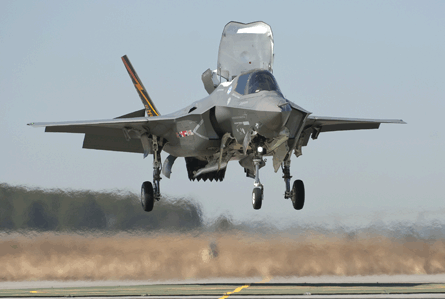Pratt & Whitney has completed a key test in the process to clear the initial service release for the short take-off and vertical landing version of the F135 engine powering the Lockheed Martin F-35 Joint Strike Fighter.
The high temperature margin test at the Arnold Engineering Development Center showed the STOVL F135 can survive despite exceeding non-augmented thrust by 28%, says Bennett Croswell, P&W vice-president.
Despite exceeding thrust limits, a post-test inspection revealed no signs of damage or structural fatigue, Croswell says. The company shipped the engine straight to its West Palm Beach site in Florida to run a final series of tests with no further repairs or parts changes.
"The purpose of the test is to validate the engine is robust enough to handle even worst-case conditions that it will have over its service life," Croswell says.
Tests on the STOVL version of the F135 should be wrapped up within a few weeks, he says. Initial service release should follow before year-end after P&W staff complete "3,000 or so verification reports", Croswell says.
 |
|---|
© Lockheed Martin |
Clearing the release milestone is a key step that shifts the F135 STOVL version from development into production.
Although the high-temperature test showed the F135 can withstand power spikes, the engine is designed to operate regularly in the 40,000lb-thrust (178kN) range.
From January, P&W will start tests on a higher-power version of the engine. The XT68LF1 is a technology demonstrator designed to boost engine power by up to 10-15%. The demonstrator will introduce new hot section technology to improve engine power, such as new turbine blades and cooling schemes, Croswell says.
Source: Flight International























